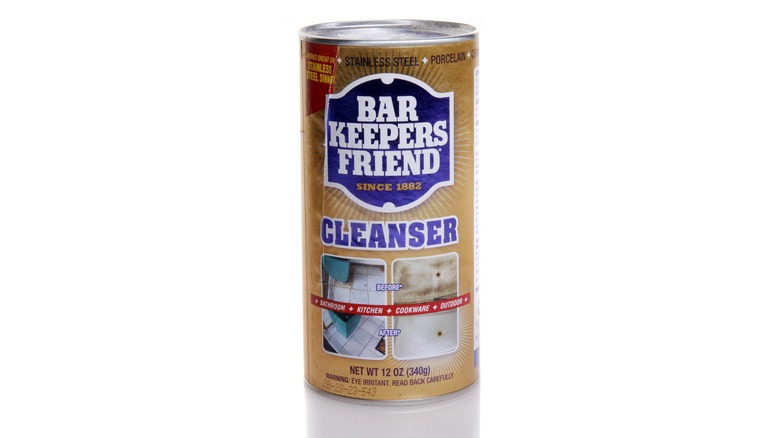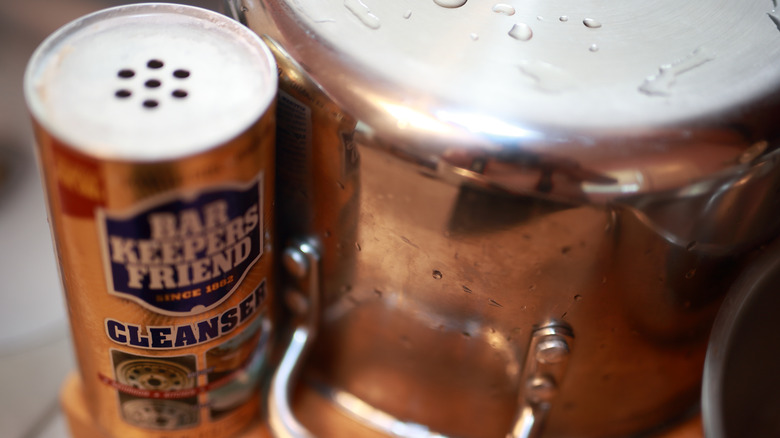Bar Keepers Friend Is The Key To Cleaning Burnt Pan Bottoms
For as long as cookware has been put on heat, the bottoms of pans have burned ... and cooks have struggled to clean them. Some use homemade cleaning solutions like baking soda and salt or vinegar and lemon, along with significant elbow grease to attempt to remove these stains. The effort drives many to give up and hide the stained pots and pans or even throw them away. What the most fortunate chefs and home cooks know is that a single natural ingredient delivered through the right chemical formulation is the key to pans maintaining a pan's pristine shine: Bar Keepers Friend.
Nearly 150 years ago, chemist George William Hoffman was cooking some rhubarb and noticed that the stains on his less-than-polished pot disappeared. Chemistry taught him that it was the oxalic acid in certain foods (like rhubarb) that breaks down burn stains, but his drive to invent a reliable product meant he added a slight abrasive (ground feldspar) to clean those burnt pan bottoms every time. And thus, Bar Keepers Friend was born.
How to use Bar Keepers Friend
Bar Keepers Friend has very specific instructions for its very simple cleaning protocol. In a sink of soapy water, wet the pan and mix a bit of water with the Bar Keepers Friend powder to make a paste (rubber gloves are recommended). Be sure the pan does not soak or leave the cleaning paste on for more than 60 seconds–this is strong stuff and the abrasive qualities could etch the pan. Wipe off the stains with a sponge or cloth and rinse off any residue, and voilà, your once sad-looking, blackened pan is gleaming again.
Like any product, Bar Keepers Friend is not for everything. It works like a dream on a range of metallic pots and pans, and while it gets those stubborn stains off of enameled cast iron, it will damage a cast iron skillet. Do not use it on quartz, marble, or granite countertops and avoid surfaces that could be scratched like mirrors and silver (other than sterling silver), or delicate woods or leather.


